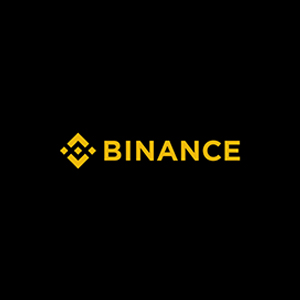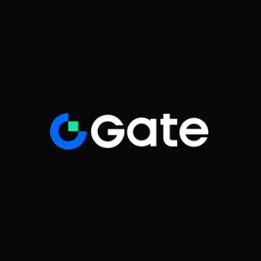Beginner's Guide to Building a Cryptocurrency Portfolio: 2025 Survival Strategies

1. Market Landscape and Challenges: Institutionalization Amid Volatility
The cryptocurrency market in 2025 is characterized by a dual-track structure of increasing institutional participation and ongoing fragmentation. On one hand, the average daily trading volume of spot Bitcoin ETFs has surpassed $5 billion, helping BTC reach a historic high of $120,000 in July. On the other hand, the rapid sectoral rotations among AI-driven tokens, RWA (Real World Assets), and meme coins have increased overall market volatility by 37% compared to 2024.
The core dilemma for beginners lies in the combination of high growth potential and a steep learning curve. For instance, XRP surged 480% following its settlement with the SEC, only to experience a sharp 55% technical correction—highlighting the destructive risk of poor timing. Even more critically, regulatory arbitrage opportunities are narrowing: the EU's MiCA framework now requires stablecoin issuers to hold 1:1 fiat reserves, while the U.S. SEC's definition of "security tokens" remains ambiguous. Compliance costs have thus become a key factor in asset screening.
2. Strategy Analysis: Balancing Alpha Generation and Tail Risk
Diversification remains the cornerstone for weathering black swan events, but in 2025, it goes beyond basic asset allocation. An institutional-grade portfolio typically follows a three-tier structure: 40% allocated to BTC and ETH serving as "crypto treasury bonds," 15% to compliant stablecoins like USDC to hedge extreme volatility, and the remaining 45% distributed across narrative-driven assets (e.g., AI tokens, DeFi 2.0 protocols) and yield-generating tools (e.g., staking pools, liquidity mining).
Data shows that portfolios with a 15% stablecoin buffer experienced 62% lower losses during the Q2 2025 market downturn compared to pure-risk portfolios.
The value of Dollar-Cost Averaging (DCA) has become more apparent as institutions continue entering the space. As companies like MicroStrategy keep adding BTC to their balance sheets, retail investors can mitigate timing risks by consistently purchasing $10–$50 worth of BTC weekly—a strategy known as "Sats Accumulation." Backtesting reveals that BTC DCA investors between 2023–2025 achieved an average acquisition cost of $82,000, which is 19% lower than a one-time lump-sum purchase.
However, this strategy has limitations in strong bull markets—if BTC surpasses $150,000 within the year, DCA returns may lag behind full allocation by as much as 38 percentage points.
Airdrop hunting, once a low-cost acquisition strategy, is evolving into a "proof-of-contribution" mechanism. High-quality airdrops in 2025—such as Movement’s $1.45 billion distribution—require on-chain actions like testnet interactions and governance voting, rather than simple multi-account tactics. However, regulatory traps abound: the U.S. IRS now treats airdrop proceeds as taxable income, while phishing scams have led to over $47 million in quarterly losses—underscoring the need for wallet segregation and permission auditing.
3. Building a Decision Framework: A Four-Dimensional Risk Assessment Model
1. Asset Layering Tools
Adopt a "core-satellite" structure: Core assets (BTC, ETH, and stablecoins) should make up at least 65% of the portfolio, with satellite allocations adjusted according to risk tolerance. Conservative investors may prefer RWA-backed stablecoins (e.g., MiCA-certified USDR) and tokenized government bonds, while aggressive investors can explore high-beta assets (e.g., L2 tokens, AI protocols). However, individual allocations to any high-risk project should not exceed 5%.
2. Dynamic Rebalancing Triggers
Establish two categories of rebalancing signals: price-based triggers (when an asset deviates ±15% from its initial weight) and narrative-based triggers (e.g., stablecoin outflows following a Fed rate cut). Historical backtests show that quarterly rebalancing outperforms annual strategies by 21%. However, it requires automation tools with sub-0.1% fees (e.g., Token Metrics AI Optimizer) to minimize friction costs.
3. Defensive Technology Stack
-
Custody plan: Limit exchange-held assets to ≤10%, allocate the remainder to multi-signature cold wallets
-
Hedging tools: Arbitrage perpetual contract funding rates (e.g., open shorts when the rate >0.1%)
-
Security audits: Use DeBank for contract approval scans and cross-reference with CertiK audit reports
4. Cash Flow Engine Design
Allocate 15% of the portfolio to yield-generating assets, such as DeFi staking (ETH staking APY ≈ 5.2%), centralized exchange Launchpools (e.g., USDR staking on MEXC), or cloud mining contracts. The key is to use regulated platforms (e.g., EU-licensed exchanges) to avoid collapse scenarios like Terra/UST and to target an annual return premium of 3%–5% above government bonds.
Conclusion: Finding Certainty Amid Uncertainty
Cryptocurrency investing is ultimately a game of probabilities. Winners in 2025 are not those who bet on a single narrative but those who build "anti-fragile systems"—anchored in BTC, cushioned with stablecoins, and augmented with controlled alpha opportunities. When Ray Dalio recommends allocating 15% to gold and Bitcoin, the intent is to hedge against contagion risk from traditional markets using uncorrelated assets.
Beginners must remember: Survival trumps returns, and discipline outweighs intuition. Survive the volatility, and time will eventually grant compounding its voice.
-
Sign Up

OKX
OKX is a leading global digital asset trading platform offering spot and derivatives services for cryptocurrencies.
-
Sign Up

Binance
Binance is one of the world's largest cryptocurrency exchanges, offering spot, futures, staking, and a wide range of digital asset services.
-
Sign Up

Bybit
Bybit is a global cryptocurrency exchange specializing in derivatives, spot trading, and crypto-financial products.
-
Sign Up

Gate.io
Gate.io is a leading crypto exchange offering diverse trading options, low fees, and strong security since 2013.
